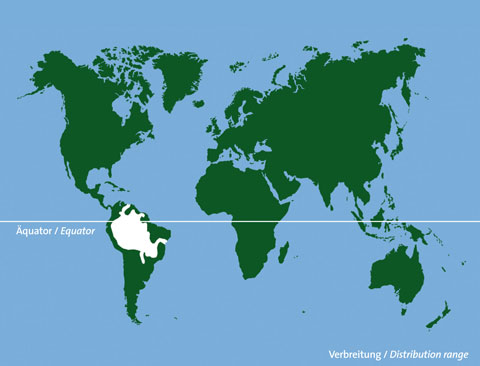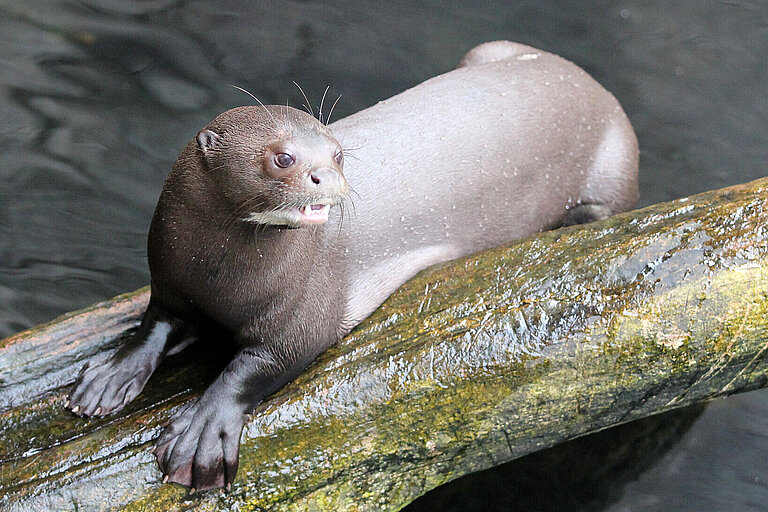Did you know?
The giant otter has perfectly adapted to semiaquatic life with about 70,000 hairs per cm2, webs between their toes and the strong paddle tail. The animals feed on 3–4 kg fish per day which they hunt in families. In order to communicate the giant otters can choose from a variety of sounds and are strong voiced with volumes reaching up to 100 decibel.
European Endangered species Program
This animal is managed by the European Association of Zoos and Aquaria (EAZA) under the European Endangered species Program.

today's feeding / commenting
03:30 PM
Characteristics
| Classification | Order predators, family martens, subfamily otters |
|---|---|
| Diet | Fishes between 10 and 40 cm in length |
| Habitat | Tropical forests at the shores of the Amazon, Orinoco and Rio de la Plata |
| Reproduction | Mate only in water; gestation time: 65–70 days; 2–4 young; young leave their family after about 7 months; maximum age: 17 years |
Status according to Red List
More information you will get on the web page of the IUCN Red List.







